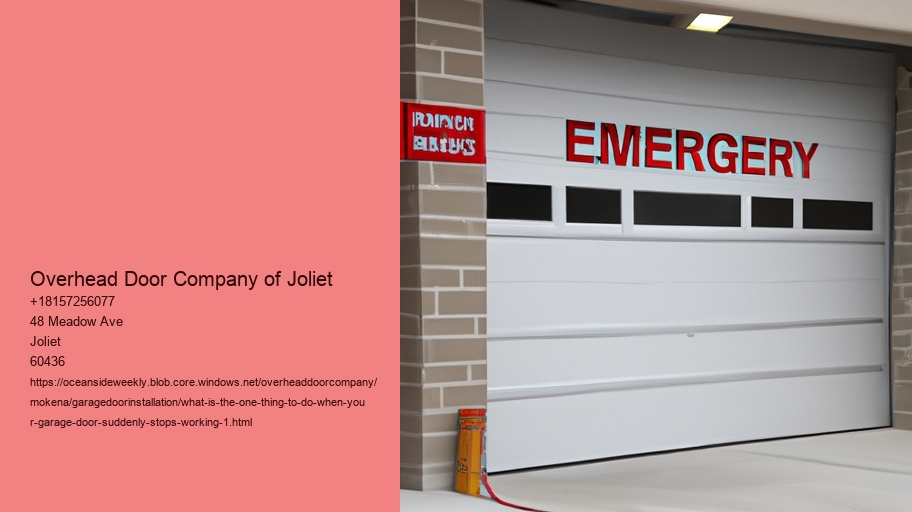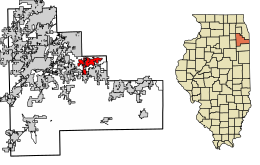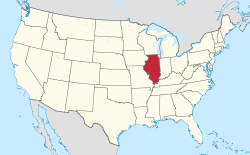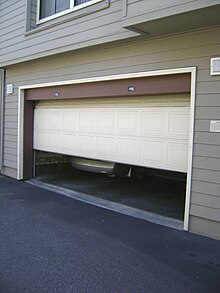Determine the Garage's Type Door and Opener
It is crucial to know the kind of garage door and opener that you have before you start troubleshooting. .
Roll-up garage doors which are often used in commercial environments constructed from the slats, which are rolled into coils.
Tilt-up doors, on the contrary they are a solid piece that can be tilted out and upwards when it opens.Equally important is identifying the type of garage door opener.The three types of garage door openers include belt-drive and chain-drive and screw-drive openers.Chain-drive openers, which use the use of a chain made of steel to lift and lower the door, are strong and affordable but they are noisy.Belt-drive openers function the same way but use a rubber belt, making them quieter and a good choice for attached garages.Screw-drive openers operate by means of a threaded steel rod that provides a balanced balance between the noise and the cost.
Once you've identified your garage door's type and the opener's model, the next step is to conduct a the basic test for common issues.Ensure that the power source is connected to the opener by examining the outlet and breaker.Inspect the manual release cord to be sure it hasn't been pulled, which would disconnect the door from the opener.Examine the door's tracks and rollers to see if they have obstructions or damages and remove any obstructions.
Lubricate moving parts if necessary since a lack of lubrication can lead to jamming or sticking.If the door still doesn't operate, consider resetting the opener.This can often resolve electronic issues or faults.Consult the manual for your opener to find specific reset instructions as this procedure may differ for different models.Many modern openers come with a reset button, while others might require unplugging before reconnecting.
The tension on springs can be high, and it can be hazardous to repair them if you don't have the right tools.
When the garage door stops functioning you'll be able to tell it is
Look for any obstructions or debris.
If the garage door abruptly ceases working, it can be difficult and frustrating, especially if it's a regular part of your life.
One of the basic and most efficient steps you can do when confronted in this scenario is to look for any obstructions or debris.This simple, yet powerful action can often be the key to identifying the issue and restoring the functionality of your garage door.Garage doors operate by a set of tracks, rollers, as well as other parts that need to be free of hindrances to function smoothly.Over time, dirt, leaves, small stones, or other debris can build up along the tracks, or get stuck in the rollers.Even an obstruction of a tiny size can prevent the door from opening or closing properly.Therefore an inspection thorough of these components should be the first step.
Begin by examining the tracks on both sides of the door.Look for any obvious obstructions or the accumulation of debris.If you notice anything unusual like a twig or a stone stuck in the track be sure to remove it.
Sometimes, the issue may not be apparent immediately So, it's recommended to run your hands along the track to feel for any hidden obstacles.Ensure that the tracks are properly aligned as well, as an incorrect alignment can cause the door to jam.Check the hinges and rollers. The parts must be able to move with no resistance. If they are stuck or sticky, this could be caused by rust or a build-up of grime. Cleaning and lubricating these parts can often resolve the issue.
It's also important to check the area surrounding the door itself.Sometimes items that are stored in the garage can accidentally be moved or fall off, blocking the path of the door.Ensure that the area is free of obstructions and there is nothing blocking the door's motion.
Verify the sensors if the door doesn't open after removing any obstructions.
Modern garage doors are fitted with security sensors that will stop the door from closing in case there is something in the path.Make sure the sensors are in good condition and aligned correctly, as dust or improper alignment can cause them to fail.By maintaining a clean path and clearing out obstructions, you'll stay clear of having to call a professional resolve a problem that's typically simple.
Verify the wall switch as well as the remote control
It's crucial to examine the wall switch as well as the remote control.
These parts are usually the culprits behind an unresponsive garage door, and doing a check can help you save time and potentially avoid costly expenses.First, consider the remote control.This handheld device is your primary tool for operating the garage door without direct physical interaction.Over time, remote controls can experience issues such as drained batteries, signal interference, or even internal damage.Start by replacing the batteries with new ones.It might seem simple, but dead batteries are a common reason for a garage door not responding.If the problem persists after replacing the batteries, try reprogramming the remote according to the manufacturer's instructions.Additionally, ensure that the remote is within the recommended range and that there are no obstructions blocking the signal.
Next, turn your attention to the wall switch, which is a crucial component of the garage door's system.
If you feel at ease then open the switch panel to examine for damaged or disconnected wires.The remote control or wall switch might be working correctly however the door still not responding. This could indicate a problem with the garage opener unit, or with other components like sensors or tracks.
It will allow you to identify these common problems before you move on to more complex troubleshooting measures.The final step is to examine the wall switch and remote control in the event that your garage door stops working is a sensible and simple approach.By checking these parts first, you'll be able to identify if the issue is in these easy to access parts or if further investigation is needed.This initial inspection not only saves time but also gives you confidence that you've completed the necessary steps to diagnose the problem correctly.
Make sure the door is balanced manually
It is frustrating and inconvenient when your garage door stops functioning. Garage doors are an integral part of your home as it is a security feature, a shield against the elements, and ease of access to your car and storage space.
Testing the balance manually on the garage door is crucial step to take if your door is malfunctioning. This simple, yet effective method will assist you in identifying any issues that might be present and also prevent any further damage.The stability of a garage door is vital to its proper functioning.A properly balanced door means that the door opener won't have to work harder than it has to, reducing the possibility of wear and tear on the motor as well as other parts.An overbalanced door however can cause severe issues over time like misalignment, broken springs, or even an entire system failure.Therefore checking the door's balance is a vital method of diagnosis that can help determine if there is a problem with your door or opener mechanism.
To manually test the door balance, first disconnect the garage door opener.
The majority of garage doors come with a release mechanism which is found on the red cord or handle. When the door is disconnected from the motor, lift it up to waist level and then let it go. A well-balanced door will remain in place or move in a gradual manner.If you discover that the door is not balanced It is crucial to address the issue promptly.Door balance issues are usually related to tension in the springs. It can be dangerous to adjust by yourself due to the high tension they're under.It is advised to consult a professional for assistance in adjusting spring tension and ensure that the door is well-balanced correctly.Doing this not only fixes the immediate problem but also increases the longevity and durability of your garage door's system.
The manual testing of the door balance is an important initial step when your garage door stops working suddenly.
By addressing issues quickly and recognizing the importance of each of addressing them, you can be sure that your garage door will function without issue and in a safe manner in the future.Examine the Tracks and Rollers
If you are confronted by a garage door that has suddenly stopped to open, your initial response is to worry or consider the most complicated technical issues.However usually, the solution is in a straightforward inspection of the tracks and rollers.This essential check will reduce time and costly repairs making it the primary that you must prioritize when your garage door stops functioning.
What is the one thing to do when your Garage Door suddenly stops working? - carport
- electrical wiring
- rain
- aluminium
Tracks and rollers are critical elements of your garage door's operational system.The tracks are the iron rails that help guide the door's movement when it opens and closes. The rollers are tiny wheels that are able to move along these tracks.
These parts can be worn out, dirty or misaligned over time. This will cause operational problems.Begin by checking the track for any obstructions. Grime, dirt and even tiny particles can be accumulating, which causes rollers to struggle to travel along the path. Cleaning the tracks with a wet cloth can resolve this problem.
The next thing to do is to examine the alignment of the tracks. The tracks should be straight and parallel. If they look bent, or out of alignment, the door might jam. It is possible to press the wrongly aligned section back into position with an instrument made of rubber. If there is a lot of damage, it's better to call an expert who can align the tracks properly.
Checking the rollers is equally important.Over time, rollers can wear out or become damaged particularly if they're constructed out of plastic.
What is the one thing to do when your Garage Door suddenly stops working? - carport
- Latter Day Saint movement
- signal
- New York City
Utilizing silicone-based lubricants may reduce wear and friction. Make sure you lubricate the springs and hinges for ensuring that your garage door is functioning properly.
To conclude, taking a look at the rollers and tracks is a sensible first step if the garage door suddenly ceases working.It's simple to do and can frequently identify and solve the most common issues.By making sure that these parts are clean, aligned, and well-lubricated, you could often get your garage door back to its original functionality without having to pay for costly repairs.
It is important to inspect and maintain these components can help prevent any future issues, extending the life span of your garage door's system.Examine for visible damage or wear
When garage doors stop working, it can be annoying and disconcerting, particularly if you are on your way out or attempting to make sure your home is safe for evening.While there may be a variety of reasons for the malfunction but one of the most immediate and practical actions to do is search for signs of damage or wear.This first inspection will usually uncover the cause of the issue, which allows an immediate and effective solution.
The garage door is an intricate system that is made up of a variety of elements, including springs cables as well as rollers and tracks all of which play a crucial role in its smooth operation.Over time, these components are prone to wear and tear because of regular usage and exposure to environmental factors.
You can easily spot obvious defects by conducting an inspection visually.Start by looking at the springs, which are crucial in the lifting and lower of the door.Look for indications of breakage, rust or misalignment.A damaged or worn-out spring can make the door unusable, and it is crucial to address this problem promptly.Next proceed to the cables and check for damaged or frayed strands that could impede the door's movement.Similarly examine the rollers and tracks for any dents, debris or obstructions that might be obstructing the path of the door.
The door is yet another part which requires focus. Check for obvious warping, dents, or bends.
Also, make sure that the door's sensors are in good condition and aligned since misalignment, dirt or dirt can hinder their work and make the door stop working.An inspection of the visuals is helpful, but it's important to keep in mind that not all problems are evident. If you don't see any obvious indications of wear or damage it's possible to talk with a professional to determine the problem.
This will not just aid in identifying the problem faster, but it will also enable you to take action to restore the proper functioning of your garage door.
You can extend the life of your garage door simply by taking proactive steps.Review the Springs and Cables
It is a frustrating experience when the garage door stops working. You should check the cables and springs. These components are vital for the functioning of your garage, and are the main culprits of a garage door that is not functioning properly.
What is the one thing to do when your Garage Door suddenly stops working? - carport
- carport
- pin
- radio receiver
The springs play an important function in the operation and smoothness of your garage through neutralizing the weight. There are two primary kinds of springs: torsion and extension. Torsion springs mount above the garage and then twist in order to conserve energy. Extension springs are on the other hand are installed on between the doors and are stretched to give the necessary force.
These springs may wear out over time and break, or lose tension, causing operational issues.The same is true for cables because they work with springs to raise and lower the door.They are typically made of steel and are designed to withstand significant tension.However they may suffer due to wear and tear, fray, or snap due to the extreme pressure they're under.A damaged cable could cause the door to become unstable or even inoperable.
In assessing the springs and cables, start by visually looking at them.Look for indications of rust, wear, or fraying.If you find a damaged spring or cable It is important to refrain from using the door until the issue has been addressed, as forcing it could cause more harm or lead to an accident.If springs appear to be intact but the door is still not functioning, it may be because they've lost tension and require adjustment.
It is crucial to stress security when it comes to garage door components.
The springs and cables are in tension and could result in serious injuries. If you do not have any experience with garage door repairs, it's better to speak with a professional. They will have the tools and expertise necessary to safely fix or replace these parts. This ensures the garage door functions efficiently and safely.In conclusion, when your garage door suddenly stops working, assessing the springs and cables is a key step in diagnosing the problem.Understanding their role and potential issues can help you determine whether a simple adjustment is needed or if professional intervention is required.Taking prompt action not only restores functionality but also ensures the safety and longevity of your garage door system.
Take a look at calling a professional technician
When your garage door suddenly stops working and it is not working, it could disrupt your day and even pose a security risk to your home.
It is tempting to get a toolbox to try a fix on your own however it is better to contact a professional. This option won't only ensure your safety, but will provide a long-lasting and more efficient solution.Garage doors are complex systems composed of various components such as springs, cables, tracks, and electronic parts.Each of these elements plays a crucial role in the door's operation, and a malfunction in any part can cause the entire system to fail.Without proper knowledge and experience, attempting to fix these issues can be dangerous.For instance, garage door springs are under high tension and can cause severe injury if handled improperly.Professional technicians are trained to deal with these risks safely, using the right tools and techniques to handle repairs.
A professional technician can also bring a level of competence and knowledge to the table that laypersons do not possess.
They can quickly diagnose the issue and identify whether it's a minor problem, like a misaligned track, or something more serious, like a broken spring.This expertise not only saves you time but also prevents the potential for further damage that can occur with incorrect handling.Professionals also have access to high-quality parts and can ensure that replacements match the specifications of your existing garage door system, leading to better functionality and longevity.Additionally the hiring of a professional could be more affordable in the long run.While an DIY method may seem less expensive initially, the chance of mistakes is high, which can lead to greater and more expensive repairs in the future.A professional technician can complete the task correctly the first time to reduce the likelihood of repeating issues.
A lot of technicians offer guarantees on their work, which gives you peace of knowing that in case something goes wrong, you're covered.A professional's help will help you save time and money. It can be difficult to comprehend the mechanisms behind garage doors, buying the appropriate tools and complete repairs could take several hours or even days. A technician will be able to fix the issue fast and allow you to get back to your regular routine.
The desire to repair the garage door yourself is very strong. However, calling in a professional is the best option, the most secure and efficient choice. Their experience and access to top-quality replacement parts and their capacity to complete quick and accurate repairs will ensure that your garage is operating efficiently and is protecting your home.


















